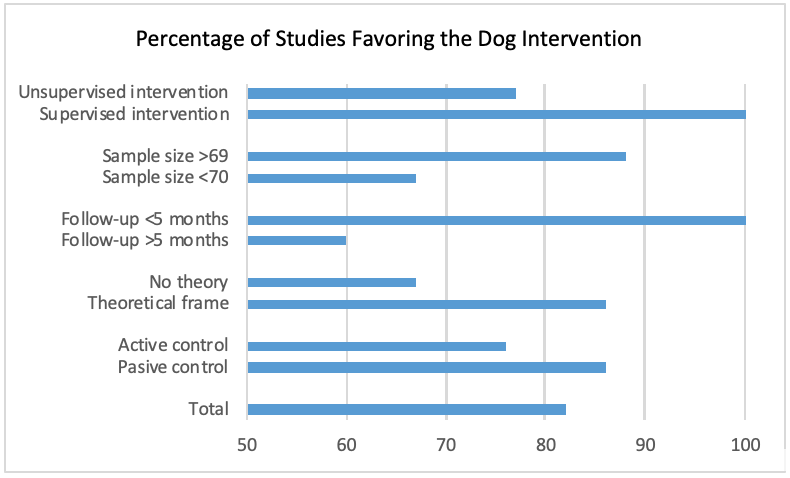Part of the BJSM’s #KnowledgeTranslation blog series

Approximately 30% of the households in high income countries own dogs, yet it is estimated that up to half of these dog owners do not walk with their dogs regularly. Promoting more dog walking seems like a logical way to enhance both human and canine health. The purpose of our paper was to review physical activity interventions that have involved canine interactions, and evaluate their effectiveness.
Methods
So, what did we do in our systematic review?
We used a comprehensive search process and appraised the risk of bias of the studies. Our main analysis collated the median effect size, as well as a count of the direction of the findings in support of the dog-related intervention compared to its comparison condition. Sub-analyses of these results were also conducted to explore group differences according to the design employed, the follow-up length of the studies, the population of the sample, the quality of the studies, setting and medium of intervention, and the theoretical frame and behavior change techniques.
Results
A total of 13 independent studies passed the inclusion criteria; five studies were classified as high risk/low quality, and eight were classified as medium quality/risk. We found evidence that canine-related interventions increased physical activity (median effect size d = .28; 82% of the studies favored the dog walking intervention over comparisons). Studies with interventions based on behavioral theory, small samples, passive control groups, supervised dog walking interventions and shorter follow-up resulted in larger effects.

Conclusion
This is the first systematic review to assess whether physical activity interventions that include our four-legged canine friends hold utility. We showed that dog-facilitated interventions do increase regular walking, but it is not clear whether this is more effective than more generic walking and physical activity promotion. Current research is comprised of proof of concept/feasibility interventions so we recommend a more refined analysis as this research evolves in sophistication and rigor.
Authors and Affiliations:
Ryan E. Rhodes, PhD1*
Maria Baranova, BSc1
Hayley Christian, PhD2,3
Carri Westgarth, PhD4,5
1 Behavioural Medicine Laboratory, School of Exercise Science, Physical and Health Education, University of Victoria, Victoria, BC, Canada
2 School of Population and Global Health, The University of Western Australia, Perth, Australia
3 1Telethon Kids Institute, The University of Western Australia, Perth, Australia
4 Institute of Infection and Global Health, University of Liverpool, Liverpool, United Kingdom
5 Institute of Veterinary Science, University of Liverpool, Liverpool, United Kingdom
No competing interests declared.
Other content recommended for you
Christian, H. E., Bauman, A., Epping, J., Levine, G., McCormack, G., Rhodes, R. E., Richards, E., Rock, M., & Westgarth, C. (2016). Encouraging dog walking for health promotion and disease prevention. American Journal of Lifestyle Medicine, 20, 1-11.
Soares, J., Epping, J., Owens, C. J., Brown, D. R., Lankford, T. J., Simoes, E. J., & Caspersen, C. J. (2015). Odds of getting adequate physical activity by dog walking. Journal of physical activity & health, 12, S102-S109.
Westgarth, C., Christley, R. M., & Christian, H. (2014). How might we increase physical activity through dog walking? A comprehensive review of dog walking correlates. International Journal of Behavioral Nutrition and Physical Activity, 11, 83.